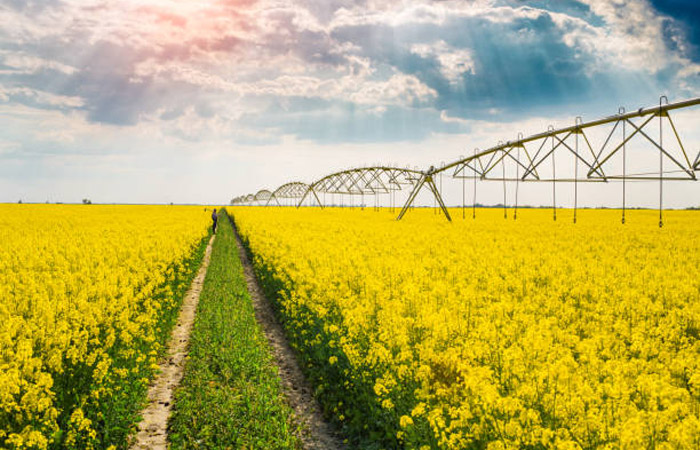Manitoba Agriculture reports cooler weather over the past week has relieved the heat stress that had been affecting some of the crops across the province.
Dennis Lange, a pulse and soybean specialist with Manitoba Agriculture and editor of the provincial crop report, says conditions have been a little cooler over the past week and crop development has advanced rapidly.
When you look at spring wheat, the majority of the areas reporting are reporting anywhere fair to good conditions for spring wheat.
Corn is showing a little bit of stress in some of the drier regions. The leaves are rolling a little bit to conserve moisture because we haven’t seen a lot of significant rainfall in some areas. Even though some areas have gotten some thunderstorms it’s been very sporadic to where those storms are coming in.
Canola ranged anywhere from 20 percent to greater than 50 percent flower.
Some of the comments that I’ve heard in the central region, we might see as low as 40 percent of the acreage being sprayed for fungicide in the central region just based on the drier conditions.
Sunflower fields are in the R-2 early bud stage to the R-3 stage and looking pretty good. They seem to be liking the drier conditions.
When we move over to field peas, field peas right are looking at the full pod growth stage with a few flat pods and just a few flowers left for the most part.
But producers are still assessing the need for possibly a second application of fungicides but the presence of disease has been quite low this year so I don’t expect a lot of second application of fungicide just based on the growing conditions that we’ve had.
When you look at dry beans, they’re moving along here anywhere from the R-2 to R-3 growth stage.
Overall, I think we’re doing OK. The cooler weather I think has helped a little bit. Overall, we’re at about 115 percent of our growing degree days that we’ve achieved so far this season.
~ Dennis Lange, Manitoba Agriculture
Lange says the majority of the province is reporting optimal to dry soil conditions so some areas could use more moisture while parts of the southwest, northwest and Interlake regions are showing wet conditions.




